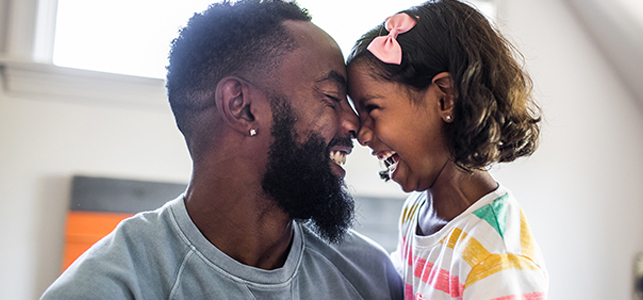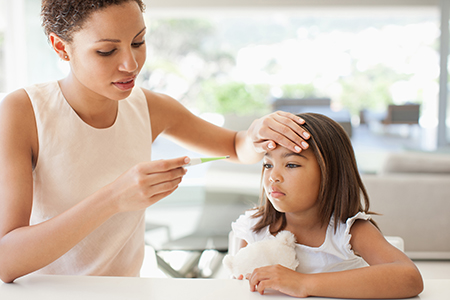
How to get an accurate reading every time
When a child seems warm to the touch or isn’t feeling their best, the first step is often to take their temperature. Not every temperature check is created equal though!
Follow the tips below to make sure you get an accurate reading for your child’s age.
 It’s important to keep a working thermometer in your home for when unexpected illnesses pop up. Inexpensive digital thermometers are available online and at local retailers.
It’s important to keep a working thermometer in your home for when unexpected illnesses pop up. Inexpensive digital thermometers are available online and at local retailers.
Rectal instructions
A rectal temperature is the most accurate reading for children under 3.
- Clean the end of the thermometer with rubbing alcohol or soap and water. Rinse it with cool water.
- Put a small amount of Vaseline or petroleum jelly on the tip of the thermometer to lubricate it.
- Let your baby rest comfortably belly down on a changing table or on your lap OR put them on their back with their legs to their chest.
- Turn the thermometer on and insert it 1/2 inch into the anal opening. Do not insert it too far. Keep the thermometer in until you hear the beep.
- Remove and check the reading.
Note: If you use a thermometer for rectal temperatures, label it “rectal” so it is never used in your child’s mouth.
Axillary (armpit) instructions
- Clean the end of the thermometer with rubbing alcohol or soap and water. Rinse it with cool water.
- Make sure that your child’s underarm is dry.
- Turn on the thermometer. Lift your child’s arm and place the end of the thermometer against the center of their armpit. Lower their arm and hold it firmly closed against their side.
- Hold the thermometer in place until it beeps.
- Remove and check the reading.
Oral instructions
Once your child is 4 years old, you can take their temperature by mouth. Always wait at least 15 minutes after your child has had a hot or cold drink before placing the thermometer under their tongue.
- Clean the end of the thermometer with rubbing alcohol or soap and water. Rinse it with cool water.
- Turn the thermometer on and place the tip under your child’s tongue toward the back of their mouth. Hold it in place until you hear the beep.
- Remove and check the reading.
A fever – Now what?
Did you know a fever is a sign that the body is fighting an infection? Fevers are a healthy response by the body and usually cause no harm. Some fevers will respond to Tylenol or ibuprofen, some will not, and that’s OK!
One way to prevent illness with fever is to make sure your child is up to date on their vaccines, including flu.
When to seek medical attention
Call the doctor right away if your child:
- Is younger than 3 months and has a temperature of 100.4°F (38°C) or higher
- Has a fever that repeatedly increases higher than 104°F (40°C)
- Has a fever after being in a hot environment, like outside in summer
- Has a fever along with:
- Unusual drowsiness or fussiness
- Stiff neck
- Severe headache
- Sensitivity to light
- Decreased urination with dry eyes and dry mouth (6-8 hrs. no urination)
- Fast or labored breathing/trouble breathing
- Unexplained rash
- Seizure or loss of consciousness
- History of a weakened immune system
- History of taking medicines that affect the immune system
- Sickle cell disease
- A central line
Let your child’s health care provider know which method (oral, rectal, axillary) you used to take your child’s temperature.
We’re here to help!
